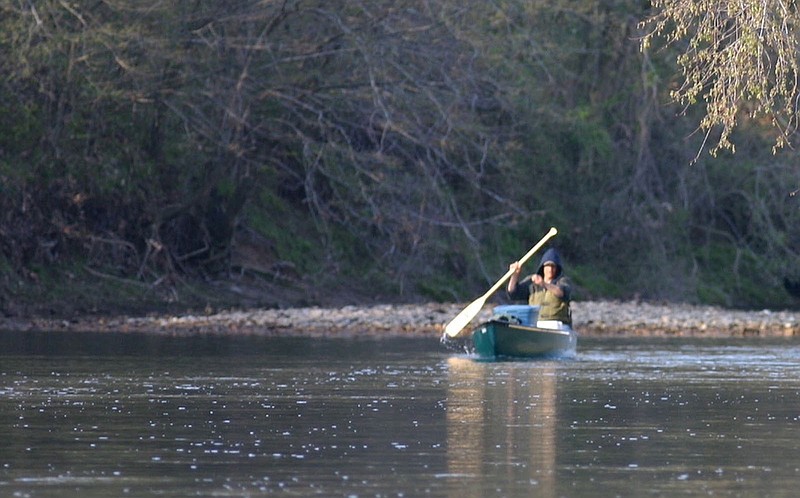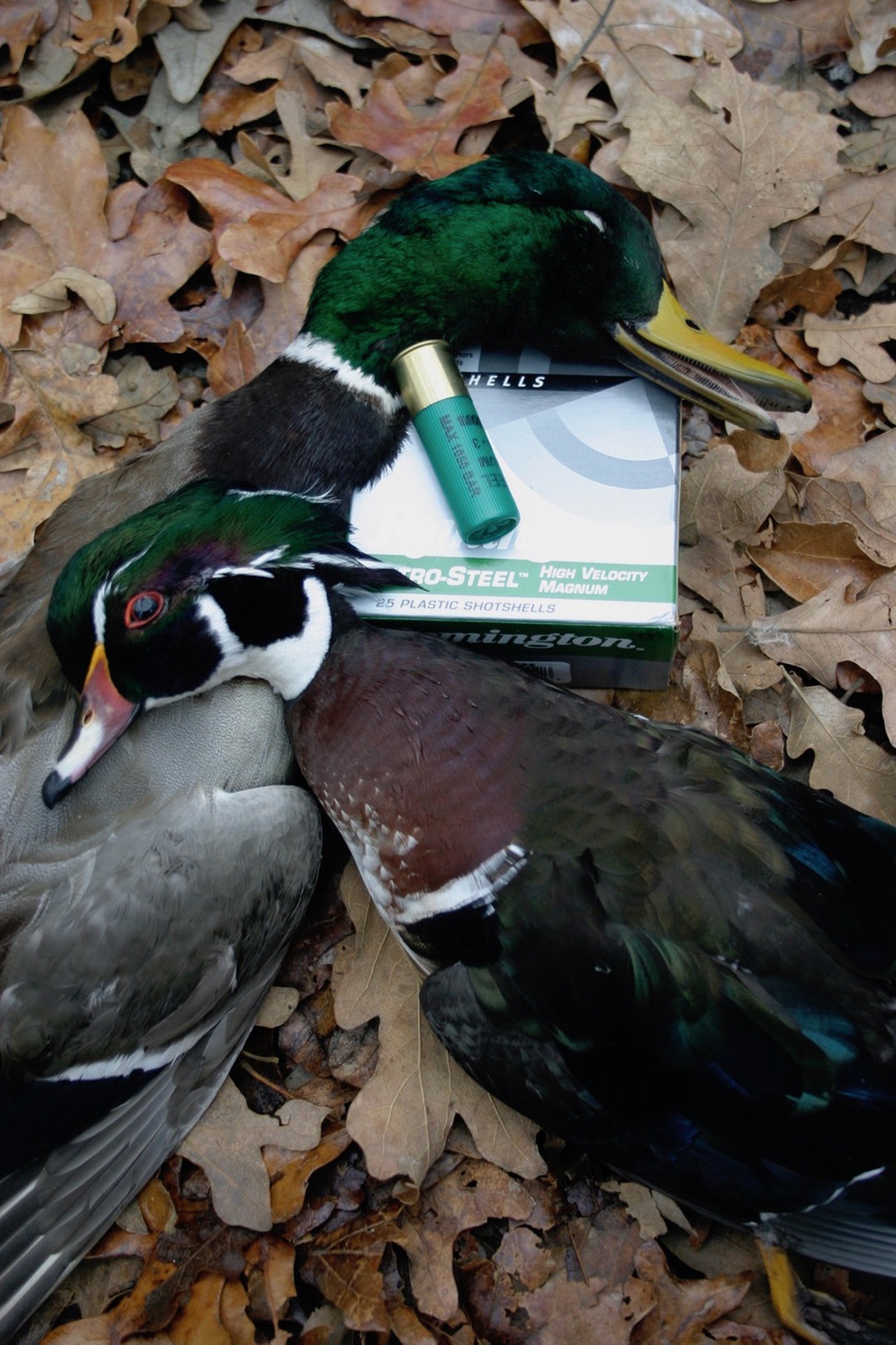Kayaks and canoes aren't just for warm-weather fishing.
The versatile watercraft are also ideal for winter cast-and-blast adventures for squirrels, ducks and even Canada geese.
I got the cast-and-blast paddling bug in 1995 while float fishing for trout on Oklahoma's Lower Illinois River with Bob Borgwat, former editor of Arkansas Sportsman magazine. It was a cold, gray, January day. The trout didn't bite at all. We rounded a bend and surprised a flock of about 50 mallards loafing in a calm side pool. Borgwat was in the bow. If he'd had a shotgun, he could have gotten three greenheads easily at point blank range.
I took that lesson to Missouri, where I often floated the Lamine River inside Lamine River Conservation Area near Tipton, Mo. That section of the Lamine River isn't good for fishing until early spring, but in the winter it attracts wood ducks and gadwalls. One does not expect a high-volume shooting experience in a canoe, but it was a good way to bag a duck or two.
You can do the same thing on rivers and creeks all over Arkansas. There is never a time that I don't encounter ducks while floating the Caddo and Ouachita rivers, and I always see plenty of Canada geese whenever I float the Ouachita River between Remmel Dam and Malvern. There is a spot on the Ouachita River downstream from Malvern that always attracts a lot of mallards. It is dependable enough that somebody built a makeshift blind at a midstream island.
It is, of course, an honored tradition to hunt squirrels while floating or paddling a river. Squirrels often feed in bankside trees or along the shore. Canoes do not alarm them, so you can get really close.
Ducks are a little harder to approach in paddlecraft, but resident Canada geese are oblivious. You can paddle almost directly to them. That makes for some easy hunting because you don't have to turn off a motor and ascertain that your boat is not still experiencing forward momentum from having been under power.
For safety, it is prudent in winter to paddle canoes and kayaks with a partner. If you tump a canoe or otherwise find yourself immersed, a partner can help you to safety and help you recover your gear.
If you are hunting and tump a canoe in deep water, your shotgun will be lost unless you take precautions. You can avoid losing a gun by attaching a long length of paracord or thin diameter rope to a float. Tie the other end to your gun sling or tie it securely to the stock in front of the grip. If the gun goes into the water, you can grab the float and pull it back up.
Also, it is challenging for a soloist to maintain control of a canoe while maneuvering it into position for a shot. Shooting opportunities often occur in tight places around logs, stickups and other obstructions, as well as near eddies. You do not want to try swiveling in a seat with a shotgun at your shoulder while your canoe spins through an eddy or riffle, nor do you want to be at an awkward, top-heavy position with an elevated shotgun at your shoulder when your canoe slams into a rock or a log.
The best way to paddle hunt is with a buddy. The person at the stern steers and powers the boat. The person in front does the shooting. The paddler always keeps the shooter pointed downstream or toward the bank. The boat should never be positioned in a way that requires the shooter to point a gun at or over the helmsman.
After the bow man gets a few shots, trade places.
The main demerit for hunting from a canoe and a traditional paddle-powered kayak is the movement of the paddles. Paddle hunting is stealthy, but sometimes not stealthy enough, especially when approaching ducks which are notoriously wary of movement.
A foot-powered kayak blunts this disadvantage by eliminating the vertical and horizontal flashes of paddle strokes. With a Hobie kayak and its pedal-powered Mirage Drive, the only movement is forward and back. It's not conspicuous, and you steer the boat with a finger-controlled rudder lever.
Other kayaks, like Native and Old Town, have foot-powered propellers. Pedaling that mechanism produces some undesirable vertical movement.
A kayak can also give you access to hunting areas that conventional powerboats can't reach. A person that works at an outdoor establishment in Hot Springs uses a Native Slayer kayak to access some prime green timber water in west-central Arkansas. The few people that know about this area regard it lightly, mostly because it is hard to reach. When mallards are in those woods, he enjoys some superb hunts and has shown us photos to prove it.
He does not hunt in his kayak. He merely uses it to access remote waters where he hunts the traditional way, standing beside a tree and calling mallards into a hole.
Even in heavily boated waters such as those at Bayou Meto and Dave Donaldson Black River wildlife management areas, a kayak can be an effective way to slip into remote areas where other people are not. It takes time, of course, and you must time your route in order to be off an area when hunting hours end.
The challenge to this kind of hunting is getting off and back aboard a kayak while wearing waders and bulky attire. It is necessary to be in very shallow water
Of course, kayaking is the domain of solitary hunters or duos. It allows duck hunters to enjoy a quality, non-traditional, low-impact hunting experience that involves a minimal amount of gear. A kayak does not have the cargo capacity of a War Eagle duck boat. You are limited to what you can stow on deck.
In that way, it is liberating. It reduces duck hunting to its essential elements, finding a good spot away from other people and relying on your calling ability to lure ducks below the treetops.

